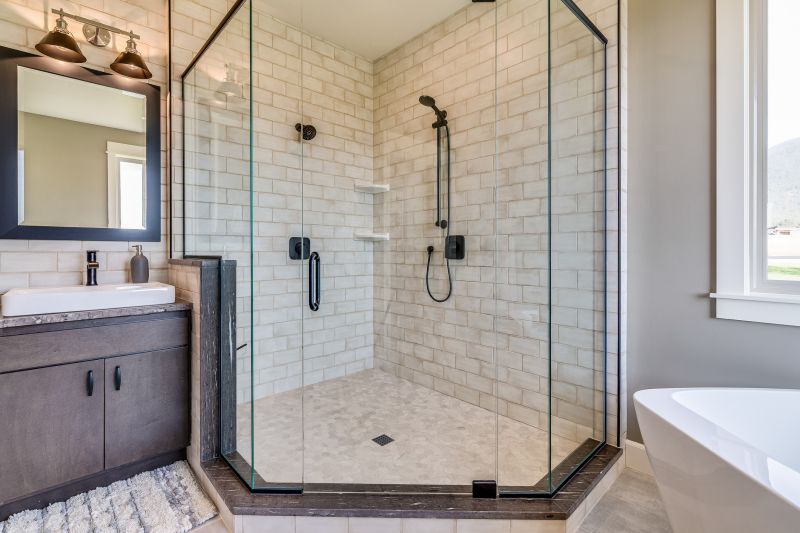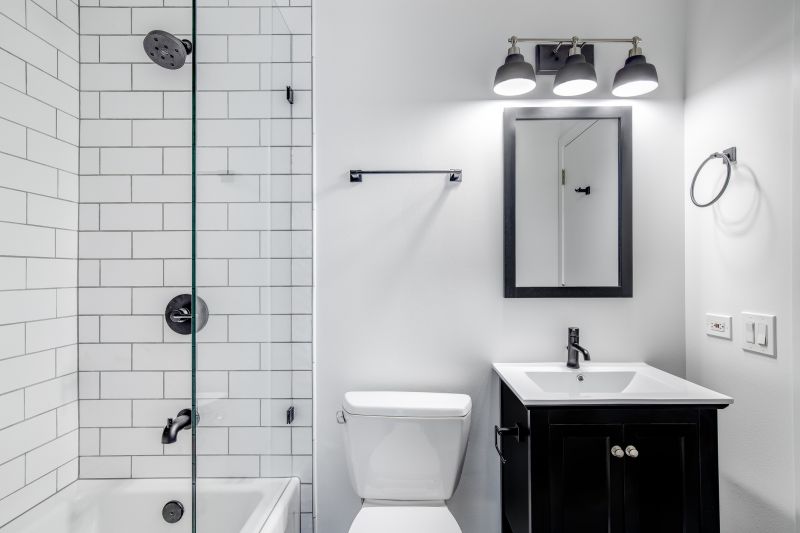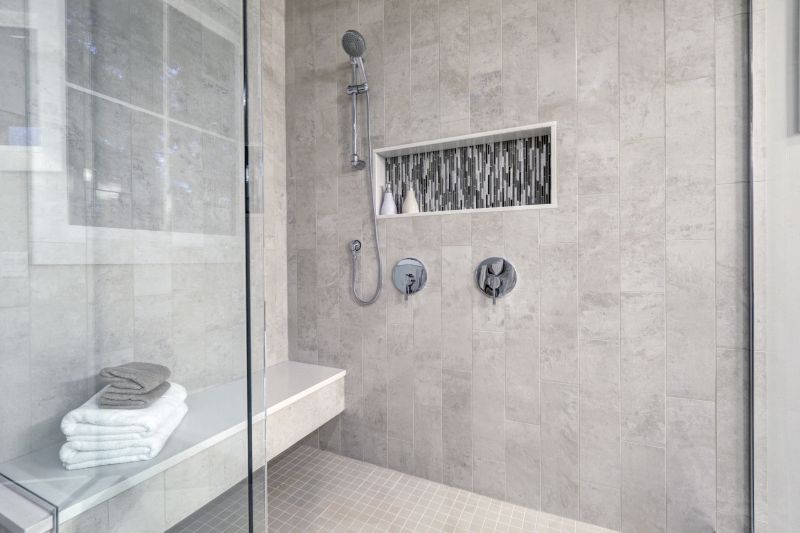Design Tips for Small Bathroom Shower Areas
Designing a shower layout for a small bathroom requires careful consideration of space utilization, functionality, and aesthetic appeal. With limited square footage, every element must be optimized to create a comfortable and visually appealing shower area. Innovative layouts can transform a compact bathroom into a practical and stylish space, making the most of the available area without sacrificing comfort or design.
Corner showers utilize the often-unused corner space, maximizing floor area and providing an open feel. They are ideal for small bathrooms, offering easy access and a streamlined appearance.

Small shower enclosures with sliding or bi-fold doors save space and offer a sleek look. They are perfect for bathrooms where space efficiency is a priority.

Glass partitions help define the shower area without enclosing it fully, maintaining an open and airy feel in small bathrooms.

Built-in niches provide storage within the shower without taking up extra space, keeping essentials accessible and organized.

Streamlined fixtures and controls reduce visual clutter, making the shower area appear larger and more modern.
Effective use of vertical space is also crucial. Installing shelves or niches within the shower wall provides storage for toiletries without encroaching on the limited floor area. Choosing minimalistic fixtures with clean lines enhances the sense of openness and reduces visual clutter. Combining these elements results in a shower layout that is both functional and visually appealing, making small bathrooms more comfortable and easier to navigate.
Incorporating innovative shower layouts in small bathrooms not only enhances usability but also boosts the visual appeal of the space. Thoughtful planning and strategic design choices can turn a compact bathroom into a functional retreat, demonstrating that size does not limit style or comfort. Properly designed small shower layouts can provide an inviting, efficient, and modern bathroom environment that meets the needs of everyday life.






